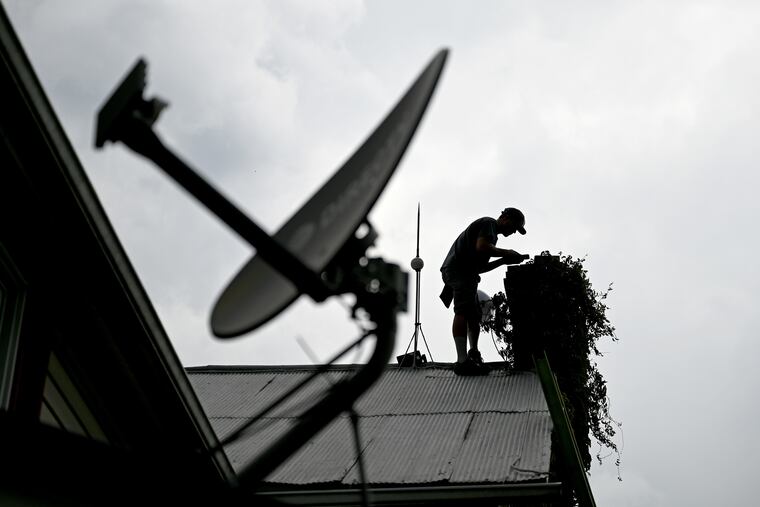Pennsylvania has a ‘digital divide.’ Here’s how to bridge it.
Building broadband networks won’t, on its own, produce economic opportunity.

In the aftermath of a pandemic that saw education, office jobs, and even medical visits all move online, the ability and comfort to use computers and navigate online are must-have skills — particularly for immigrants and other vulnerable residents.
The huge surge of broadband funding that the federal Infrastructure Act is sending to Pennsylvania could advance economic mobility and integration across our state. The bipartisan package commits billions of dollars to make high-speed internet service universally available and affordable — a powerful economic boost, given that households with an internet-connected computer are 27% more likely to participate in the labor force than those without.
But if our elected officials hope to deliver on this promise of inclusive economic growth and opportunity, they first need to throw out their preconceived and outdated ideas of why too many in our communities are stuck on the wrong side of a digital divide.
For the most part, it’s not because of infrastructure.
Simply building out networks in rural areas — as important as that is — won’t do anything to help the one in four Pennsylvanians who remain unconnected in the overwhelming share of our neighborhoods already wired with fast, modern broadband networks. Even President Biden’s momentous announcement of free high-speed internet service for up to 48 million low-income Americans is far from a silver bullet.
Too many of our unconnected neighbors lack the digital know-how to share in the return on these investments. So even if they have access to internet, and can afford it, they can’t use it to its full potential. One in six Americans don’t know how to use email or search Google. One in four need help to learn how to use a new computer or tablet. And one in five Pennsylvanians don’t have a computer or tablet in their homes.
The White House deserves credit for creating a new $30-per-month Affordable Connectivity Benefit, and for working with internet providers — including Comcast and Verizon, the leading providers here in Philadelphia — to offer lower-price, high-speed plans fully covered by this benefit. But this program won’t, on its own, close the digital skills gap driving our digital divide.
We’ve already seen this reality play out in Philadelphia’s efforts to boost broadband adoption. PHLConnectED, Philadelphia’s partnership to provide free home internet to unconnected K-12 school families, has connected more than 21,000 families in just under two years. Despite this progress, 9% of K-12 families in the city are still not connected at home. Free helps, but only up to a point.
To bridge the gap, policymakers in Harrisburg and in City Hall need to focus their attention — and a big chunk of our inbound federal broadband funding — on cutting through the tangle of other barriers standing between underprivileged communities and digital opportunity.
The City of Philadelphia’s Digital Navigator initiative offers a smart model on which to build. Launched two years ago, this program funded a handful of community-based non-profits in neighborhoods across the city to train trusted guides to offer digital newcomers one-on-one support in signing up for free broadband programs, obtaining a subsidized computer, and learning the basic skills needed to log on. Nationwide, nearly 80% of participants in similar Digital Navigator programs find them helpful for boosting confidence online.
Navigators trained under Philadelphia’s initiative fielded calls in 15 different languages, following up an average of three or four times to build an ongoing support relationship. These data underscore the huge opportunity that community non-profits now have to weave together traditional English language programs for non-native speakers with digital literacy training initiatives.
The Welcoming Center — a non-profit supporting Philadelphia’s immigrant communities — has pioneered this kind of hybrid curriculum in our Foundations for Communications in the U.S. (FOCUS) program, which integrates English language skills, digital literacy, and career readiness training to help students adopt skills they need in modern American work environments.
Funding from the Infrastructure bill could empower and launch dozens of similar efforts in community centers, schools, and libraries in every corner of the city, tailored for other populations who are least likely to have digital fluency, such as older Americans, the housing insecure, or former prisoners re-entering society.
Building broadband networks won’t, on its own, ensure economic opportunity. But parallel investments in both digital and educational infrastructure could deliver real, transformative change.
Peter Gonzales is President & CEO of The Welcoming Center, a Philadelphia non-profit that has helped 17,000 immigrants integrate and find economic opportunities since its founding in 2003.